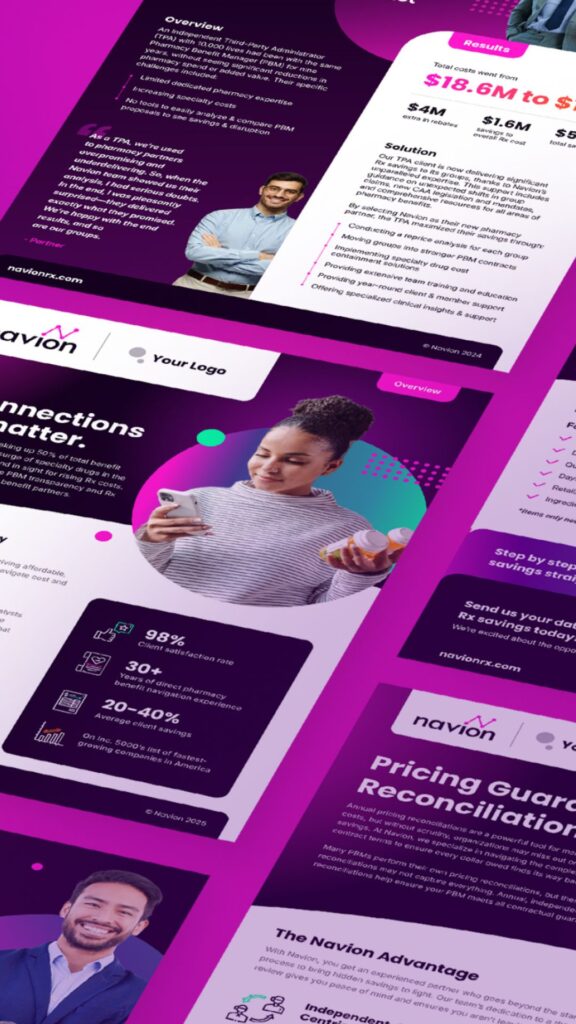By Jason Peterson, RPh; Beckie Fenrick, PharmD, MBA; and Emily Crisano, PharmD, RPh
August brings the familiar back-to-school rush—a stressful time for many families, especially those with children diagnosed with attention deficit hyperactivity disorder (ADHD). The seasonal transition also marks a surge in demand for ADHD medications, compounded by ongoing nationwide shortages.
Since late 2022, these shortages have disrupted treatment access and continue to persist in 2025. Families often face medication changes that can lead to higher costs or reduced therapeutic benefit for their children.
In this article, we’ll explore how plan sponsors can better understand and respond to the evolving challenges surrounding ADHD medications.
ADHD Medications Explained: Stimulants, Non-Stimulants, and Access Challenges
ADHD is a neurobehavioral condition characterized by persistent inattention, hyperactivity and impulsivity. Symptoms often begin in childhood and continue into adulthood in about half of cases. Treatment typically combines cognitive behavioral therapy with medication, most often stimulants.
Stimulant medications (amphetamines and methylphenidate) are considered a first-line pharmacologic option. Available in immediate- and extended-release formulations, they increase dopamine and norepinephrine in the brain. Because they are Schedule II controlled substances, prescribing and refills are tightly regulated, making shortages even more disruptive for patients and caregivers.
Non-stimulant medications (atomoxetine, guanfacine and clonidine) provide alternatives for patients who don’t respond to or prefer to avoid stimulants. These medications work by affecting norepinephrine activity and can play a key role in treatment continuity during shortages.
ADHD Prescriptions Are Increasing — And So Are Shortages
Over the past five years, prescriptions for behavioral health medications—including ADHD treatments—have risen significantly. Increased mental health awareness and expanded access have fueled higher utilization across age groups, particularly among adolescents and young adults.
This rapid growth has strained supply chains. Fixed manufacturing quotas, limited generic production, and rising demand have created persistent shortages that remain unresolved.
The Impact of Telehealth on ADHD Prescribing Trends
Telemedicine has dramatically expanded access to ADHD diagnosis and treatment, especially in rural and underserved communities. The DEA and HHS have extended telehealth prescribing flexibilities through 2025, allowing clinicians to initiate stimulant prescriptions without in-person evaluations.
While this improves treatment accessibility, it also contributes to rising prescription volumes. The rapid expansion of online ADHD clinics and lower diagnostic barriers have sparked concerns about overdiagnosis and potential overprescribing.
The Public Health Risks of ADHD Medication Misuse
Stimulant misuse is a growing public health concern, as evidenced by multiple national studies, particularly among adolescents and college students who may use medications nonmedically to enhance academic performance.
Risks also extend to younger children. The FDA recently updated ADHD medication labels to highlight adverse events such as appetite suppression, weight loss, and growth issues in children under six taking extended-release stimulants.
Medication errors are also increasing, with U.S. poison control centers reporting more ADHD-related incidents—underscoring the importance of caregiver education and vigilance.
Health and Safety Concerns with ADHD Stimulant Use
Although effective, ADHD medications carry significant health risks. Emerging research links stimulant use to increased risks of psychosis and mania, and some studies associate long-term use with cardiomyopathy in young adults.
These adverse outcomes not only affect patient health but also increase medical costs, hospitalizations, and emergency visits. For plan sponsors, this translates into higher claims volume and greater pharmacy and medical benefit expenditures.
Could ADHD Stimulants Become the Next Prescription Drug Crisis?
Concerns surrounding stimulant medications echo earlier crises involving prescription drug misuse. Without proactive oversight, rising use and misuse of ADHD medications could evolve into a broader public health problem. Plan sponsors have a critical role to play in balancing access, safety, and cost.
Best Practices for Plan Sponsors Navigating ADHD Medication Challenges
To address these challenges, plan sponsors should consider:
- Refining formulary design to ensure availability of both stimulant and non-stimulant medications, especially during shortages.
- Implementing utilization management strategies such as prior authorizations or quantity limits to support appropriate prescribing.
- Educating members about ADHD treatment, medication safety and the risks of misuse.
- Encouraging care coordination between prescribers and behavioral health providers for comprehensive treatment.
- Monitoring pharmacy claims data to identify potential overuse or early refill patterns.
A strategic approach allows plan sponsors to safeguard both accessibility and safety while managing costs.
Navion’s experts provide the insight and guidance needed to stay ahead of ADHD medication challenges today—and whatever comes next.










